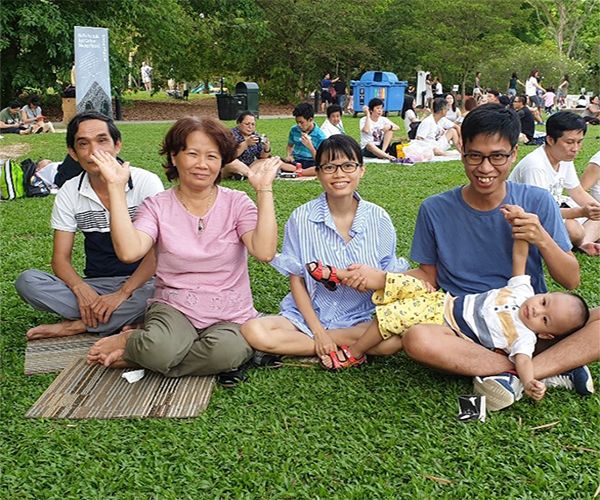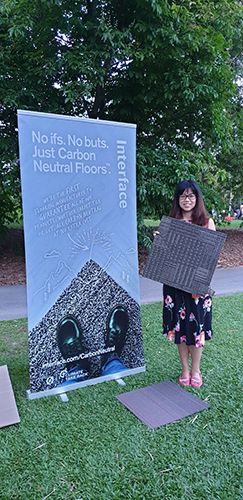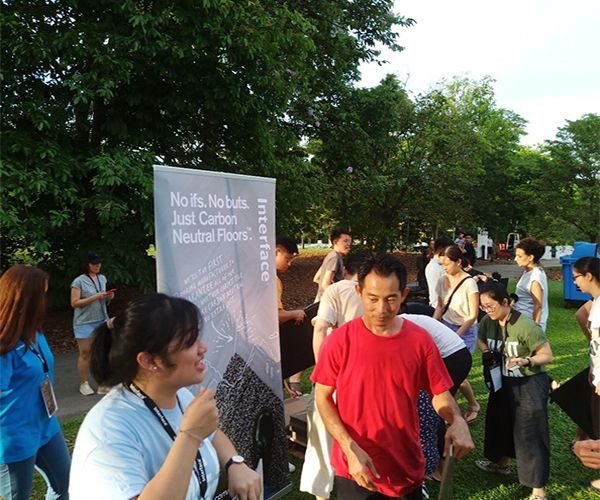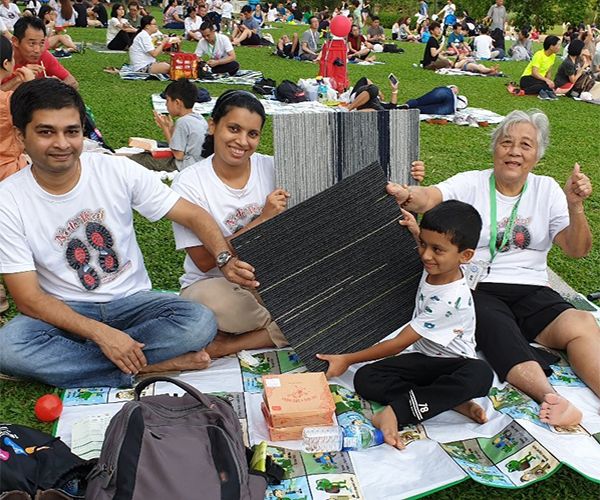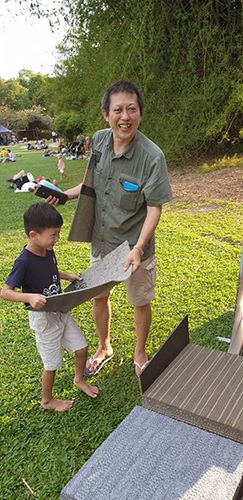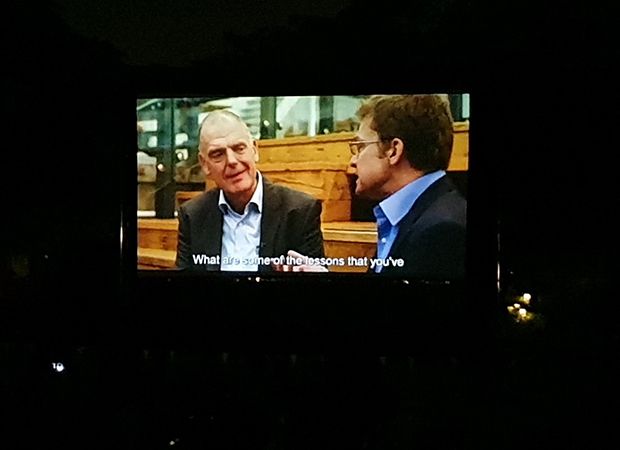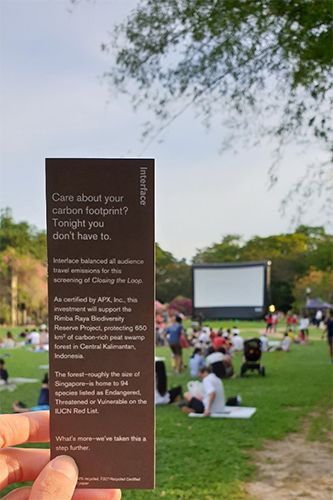Last Saturday evening, we showed 1,000 people what we were about at a public screening of Closing the Loop held at the Singapore Botanic Gardens. This is the world’s first feature-length documentary about the circular economy, featuring Interface right at the top.
We are happy to have supported event hosts Keppel Group by working with our dealer partner Contrac-Image to provide 300 carpet tiles, left over from various projects, that the audience could use as picnic mats and later take home.
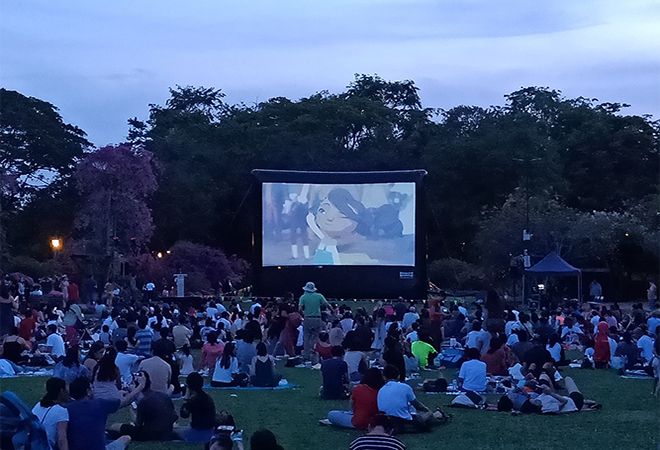
Pre-show screening of The Unlikely Hero by Interface.
We had an eye-opening and inspiring evening learning about circular innovation solutions from Barloworld, Biogen, Dutch Awareness, Novamont, REDISA and Quito City. But perhaps our favourite scene came around fourteen minutes into the film, when the presenter, global sustainability expert Prof. Dr. Wayne Visser, asked our Vice President Supply Chain (Europe, Africa, Asia and Australia) Ton van Keken, “What would you say to other companies that want to follow this revolutionary path, that want to be part of where is effectively the next Industrial Revolution. What are some of the lessons that you’ve learned that you could pass on?”
To which Ton responded:
“For companies to proceed on this revolutionary path I would say it starts with your own people within a company.”
“If you turn your own people into believers, if they get that something has to change, then they become ambassadors that work with your customers and that work with your supply chain. It starts with leadership and the top management having that vision and supporting that implementation.”
If the conversations we had with the audience were any indication, we think we turned a few people into believers that day! We even had a long-term fan – a former Chicago-based architect – come up to us and share how she used to employ all means to spec Interface because she knew what we were doing for the environment.
By working closely with the dedicated Botanic Gardens staff and scouring the venue after the event, we made sure that every tile was accounted for after the event and none were wasted. Each of these carpet tiles is 100% carbon neutral, as is every product in our portfolio — whether carpet, LVT or nora® rubber flooring. By changing how we design and make things, we have reduced our products’ carbon footprint by 60% since 1994. We balance what we still can’t avoid with carbon offsets that support renewable energy, fuel switching and reforestation to keep carbon in nature and out of the atmosphere.
We are also proud to have worked with our global network to balance all audience travel emissions for this movie screening. This investment went towards the Rimba Raya Biodiversity Reserve Project in Central Kalimantan, Indonesia, which protects 650 square kilometres of carbon-rich peat swamp forest – an area roughly the size of Singapore – by engaging communities with education and agroforestry training. The forest is home to 94 species that are classified as Endangered, Threatened or Vulnerable on the IUCN Red List including the Bornean Orangutan, the Asian Sun Bear and the Clouded Leopard.
Click here to learn how else we – and you – can Live Zero as a first key step towards Climate Take Back™, our mission that invites other companies to join us as we commit to running our business in a way that is restorative to the planet and creates a climate fit for life.
